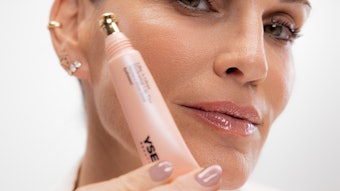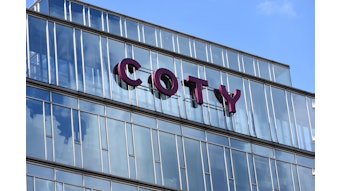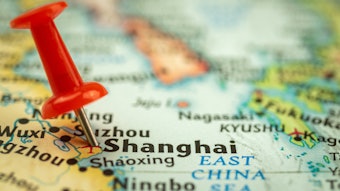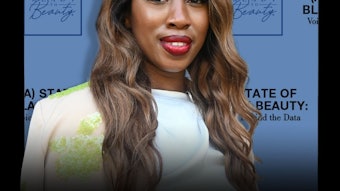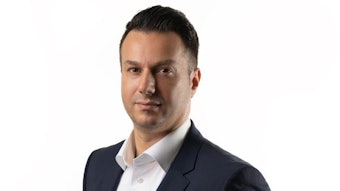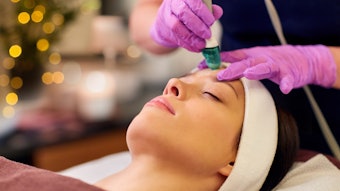- Merger and acquisition (M&A) trends are always hard to predict, but for the beauty industry, sectors like professional skin care brands and beauty devices are primed to see more M&A activity in 2014.
- Retail and distribution realities are often some of the biggest factors in M&A transactions, as brands with strong distribution chains are often easier to expand and, thus, more attractive to acquirers.
- Independent brands often have more freedom and agility in product development, and that, in itself, can make them attractive targets for M&A.
It’s early in the year, but mergers and acquisitions, or M&A, is already a hot topic in the beauty industry. Coty picked up OPI’s U.K. distributor Lena White as one of its first moves of 2014, and very late in 2013, Valeant Pharmaceuticals acquired medical aesthetic device manufacturer Solta Medical, while L’Oréal took on men’s care brand Nickel.
Some of the larger M&A deals from 2013 also are still continuing to sound reverberations throughout the industry. Carrie Mellage, vice president of consumer products for market researcher Kline & Company, notes that both Revlon’s acquisition of The Colomer Group (a company it had owned in the past and which includes the American Crew and CND/Shellac brands) and L’Oréal’s moves with Indian company Cheryl’s Cosmeceuticals, Shiseido professional skin care brands Carita and Decléor, Chinese company Magic Holdings International, and Brazilian beauty retailer Emporio Body Store—in which the L’Oréal-owned The Body Shop acquired 51% of it with an option to expand that percentage to 80% by 2019—are some of the biggest deals in the beauty industry lately. “I would say there does seem to be a lot more happening now than there had been in the last few years,” Mellage notes.
2014 Expectations
For 2014, Mellage expects to see more M&A movement overall, and, notably, moves in some distinct niches. “Some of the spaces where we’re seeing a lot of activity are particularly in the professional beauty space—and in skin especially,” she says of recent M&A. “We have Obagi being acquired by Valeant, SkinCeuticals acquired by L’Oréal several years ago now and, more recently, SkinMedica acquired by Allergan—so we have several of the top medical brands of skin care being acquired in the last few years.”
Mellage continues, “[The professional skin care] segment is interesting to look at for a number of reasons. Its brands are often experiencing higher growth, especially the smaller, up-and-coming brands. A lot of times, they’re growing in double digits, so it is an attractive growth opportunity [for potential acquirers]. And it’s often where we’re seeing innovations hit the market for the first time, so it could be attractive from an R&D standpoint as well.”
There also is the increasing presence of beauty devices to contend with. “A lot more beauty device brands are being acquired, and I would expect some more activity to happen in the devices space,” Mellage says. “It’s similar to where we were 10 years ago with professional skin care. It’s been two to three years now where we’ve been looking at the beauty devices market, and [when we first began tracking], basically none of the beauty device brands were owned by large CPG firms. When L’Oréal acquired Clarisonic, that kind of opened the floodgates to more acquisitions in that space. There are still a lot of possibilities there.”
Additionally, Mellage notes that beauty companies and investors are looking at different global markets. “Certainly the emerging markets are the next frontier markets that many companies are looking to get a foothold in. But I wouldn’t say its limited just to emerging markets,” she says. “A lot of times, a company’s sales may have stalled in their domestic markets or the more mature places where they participate, and so acquiring a smaller, up-and-coming brand would help accelerate some growth.”
Buying Brands
If your company is looking to make acquisitions, it’s certainly an exciting time—technology and growing global markets offer a lot of new opportunities. But having a game plan before buying is always a good idea.
Mellage explains, “I think [companies looking to purchase beauty brands] really need to look beyond their own existing knowledge. A lot of times, even if they already participate in the industry, their knowledge might not be as broad or as unbiased as it needs to be to identify and assess the different opportunities. Also, there tends to be a lot of landmines buried in contracts, supply agreements, manufacturing processes and so forth, which can require significant due diligence to uncover. I was talking with our senior vice president Eric Vogelsberg, who heads our M&A practice at Kline, and he commented that a lot of acquirers are too reliant on their internal deal teams. They tend to overestimate what the synergies might be in order to successfully integrate and manage the brands once they own them.”
According to Brian Robinson, president of TPR Holdings, which owns beauty brands such as Cargo Cosmetics, Zirh, FCUK fragrances and more, “We look for a few things when we evaluate brands for potential acquisition. Some of the key evaluations items are: a) Does the brand have historical proven sell-through?; b) Does the brand have an excessive amount of general and administrative expenses?; c) Does the brand have current distribution with any of our existing partners?; and d)Can we improve the overall operations as they currently exist?” These retail partnerships and logistical, business-backed elements are often key in new acquisitions. “Our brands do share customers—not only retailers but international distributors as well. This gives us some strength in bundling brands. In many cases, they also share component suppliers as well, so we can help with the supply chain and so on,” Robinson says.
He also explains, “Brands with traditional distribution—perfumeries, department stores, big box/mass—are easiest to sell due to ease of transition to large multinational players. Anything with non-traditional distribution is going to be harder to convince someone to buy without the pipes already laid down and the experience in the category and/or channel.”
For the small brands looking to sell to interested acquirers, having a positive public persona also is a great way to garner M&A interest. “Getting your name out there is important,” notes Mellage. “Some of the small brands may only have $1–2 million in sales, but they have a great reputation and are out there. Get some good publicity; you can use a lot of PR and social media as relatively inexpensive ways to make that happen. And then have the sales behind it, to show a solid track record financially. Investors want to be looking for that—steady gain and potential opportunity.”
Remaining Independent
The reason for all of the exciting opportunity in the beauty industry right now is largely because of the great small brands that are out there catering to niche markets or specific categories, and these independent brands aren’t always looking for growth through M&A.
According to Jane Wurwand, founder and owner of professional skin care brand Dermalogica and The International Dermal Institute, “The advantages of being an independent company is that we are agile, nimble and can respond to what’s happening on the ground. It allows us to react quickly to situations and opportunities as they arise without having to go through any red tape. We can develop products that we feel are interesting, unique and niche. We are planning for the long-term brand identity—not just the next quarter of profits.”
Dermalogica, which launched in 1986, targets consumers that are skin-savvy and seeking results-oriented professional products through the recommendations of a licensed skin therapist or esthetician, says Wurwand. “Today, Dermalogica retails in more than 7,000 selected skin care centers, salons and spas across the U.S., and many more globally in more than 80 countries,” as well as online, she notes.
Another independent brand, Mode Cosmetics, which specializes in nail care products among other high impact color cosmetics and skin care products, launched in 1997 with sisters Cristina Samuels and Jennifer Isaac at the helm. “With 383 SKUs, Mode’s distribution includes pharmacies, supermarkets, salons and online, and Mode’s uniqueness also allows us to target unconventional distribution channels in the market,” explains Samuels, who, in addition to being Mode’s cofounder and co-owner, also is a GCI’s editorial advisor.
Samuels reflects on the agility of being independent, saying, “From creative freedom to financial freedom, the advantages of being an independent beauty brand, for us, are innumerable. We are quick to market new innovations, source unique ingredients from around the world, and develop and market never-before-seen technologies and products that normally take non-independent companies many years to bring to market. As an independent company, our hands are not tied to the bureaucratic chain that mandates the approval or rejection of projects, decision-making, and dependency on the monies or lack thereof allocated for projects.”
However, while the excitement and flexibility of being an independent brand is enticing, there are downsides as well. “The disadvantages really are the same as the advantages—that we do everything ourselves,” says Wurwand. “There is not much in the way of insulating ourselves from the hard work of our business.”
And thus the always open potential for M&A. As Samuels notes, “Entertaining the idea of M&A is never out of the question, but it is never a black-and-white issue, as many factors play heavily in M&As.”
Watching for Change
With sectors like beauty devices and professional skin care already targeted for M&A activity in 2014, what other factors are pushing mergers and acquisitions in the beauty industry? “The areas in the beauty industry where we tend to see the most acquisitions are skin, hair and color cosmetics,” says Mellage. “They’re generally more active areas and faster growing, in addition to having the most opportunity for smaller brands that exist. Once we start getting to more toiletry categories, like toothpaste, those are pretty much dominated by the large players. There’s not a ton of smaller, niche brands out there anymore. And the same is true, probably, for the soaps category. And then fragrance brands, for a different reason, aren’t necessarily an attractive acquisition area—usually because those companies will be more active with licensing agreements, as opposed to M&A.”
Additionally, the explosion of omnichannel retail has fostered new opportunities. “For years, people were afraid of e-commerce, then it became everyone’s biggest door. Then brands and retailers fought against TV shopping. I think it’s fair to say now that everyone realizes the brand awareness and profitability that this channel creates,” explains TPR Holdings’ Robinson. “It’s a big focus for brands to be on TV shopping, and retailers love to see the bump in business and don’t worry about a lack of prestige by selling on TV any longer.”
On the horizon, Robinson notes, “What I see as the next frontier is direct sales. Countries like Mexico, Brazil and Russia enjoy extremely high rates of sale through the direct sales channels. With the traditional retail landscape getting more crowded and competitive, there could be room for brands that otherwise would be squeezed out to be sold through direct sales. The key here winds up being the distribution. Once you have it and you can deliver a good value and high quality, you can sell most anything through this distribution channel.”
